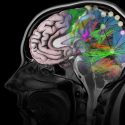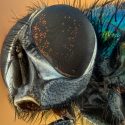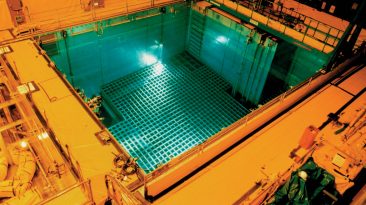You’ve seen it in the movies and read about it in books, but now the idea of creating artificial life in a laboratory is becoming a reality.
In 2010, a team of scientists successfully built a synthetic cell from scratch. Some experts praised the experiment as “a defining moment in the history of biology,” while others were terrified of its implications.
How were these scientists able to create new lifeforms? What are the potential benefits of their creation? And what happens if these lifeforms are unleashed beyond the laboratories?
This brand new organism, affectionately known as “Synthia,” was created by synthesizing a DNA code and injecting it into a single bacteria cell. At their best, synthetic lifeforms could be used to create biofuels and medicines, but in the wrong hands, they could be used to create the most powerful bioweapons imaginable.
Are the benefits really worth the risks? Most lifeforms are created as a result of “Darwinian evolution,” but “Synthia’s” birth was a much more calculated process.
[dx_custom_adunit desktop_id=”RTK_CDE4″ mobile_id=”RTK_SUFd”]Dr.Craig Venter, a billionaire biologist, apparently bored with his other entrepreneurial efforts, decided he’d try his hand at playing god instead. He started by reading the DNA of Mycoplasma mycoides, a bacterial species that infects goats, and recreated it piece by piece.
Then he stitched those pieces together and inserted them into bacteria of a different species. This created a brand new, completely artificial bacteria that grew and multiplied for generations.
So what’s the point of it all? Are we just messing around with nature because we can? Some people think so, but Dr.Venter always had grand aspirations to use this technology for the good of humanity.
In fact, since his initial proof of concept, the U.S. Department of Energy has already started working on modifying organisms such as yeast and e.coli to produce renewable biofuels. Some researchers have even been able to modify cells in diabetic mice to monitor blood sugar levels and secrete insulin accordingly. In years to come, this technology could extend to humans, and make life much easier for type 1 diabetics.
The potential is gigantic, but so are the dangers that come with it. These synthetic lifeforms do wonders in the lab, but what happens if they’re let loose into the wild?
One fear is that these artificial microbes could threaten the natural balance of ecosystems because they don’t obey the rules of the natural world. They could wipe out entire crop plants, and send the farming industry into a tailspin.
Or what if the technology got into the wrong hands? Terrorists could use it to design a custom virus to unleash on populations of their choice or create a biological weapon our world’s not ready for.
While these scenarios may sound like the stuff of science fiction, we should consider them, because they expose the bigger issue that there aren’t clearly defined regulations for synthetic biology.
Before we go investing in all of the potential benefits of this technology, maybe we should stop and put systems in place to make sure it doesn’t work against us.
Subscribe to What-If on Youtube or follow the show on Facebook Watch.
Sources
- “Ethics Concern Over Synthetic Cell”. 2019. BBC News. Accessed January 29 2019.
- “Scientist Accused Of Playing God After Creating Artificial Life By Making Designer Microbe From Scratch – But Could It Wipe Out Humanity?”. Macrae, Fiona, 2010. Mail Online. Accessed January 29 2019.
- “Slate’S Use Of Your Data”. 2019. Slate Magazine. Accessed January 29 2019.
- “Synthetic Biology: Designer Cells Treat Diabetic Mice”. 2016. Nature. Accessed January 29 2019.
- ” Engineering E. Coli For Biofuel, Bioproduct Production | U.S. DOE Office Of Science (SC) “. 2019. science.energy.gov. Accessed January 29 2019.



























